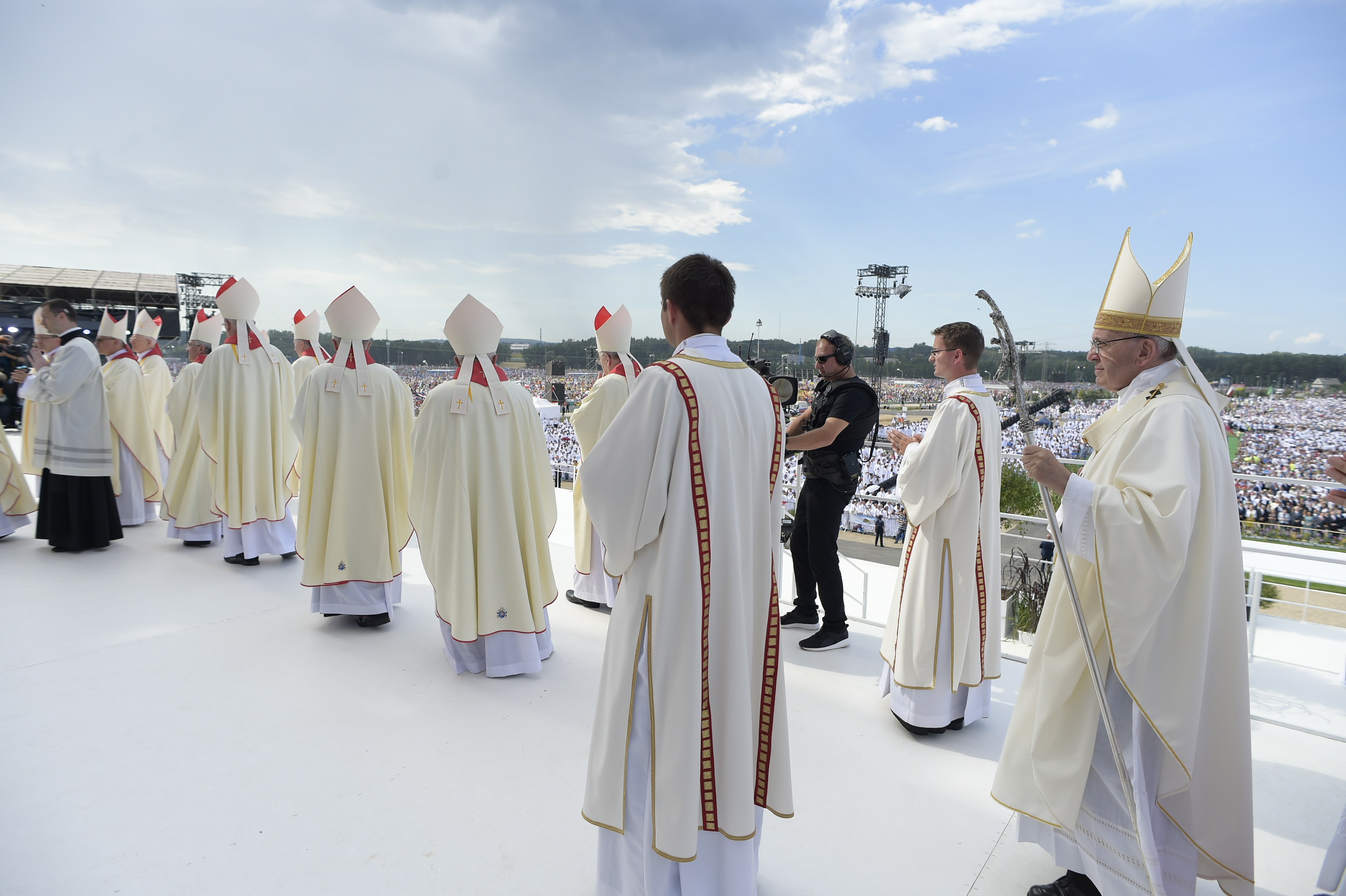Answered by Legionary of Christ Father Edward McNamara, professor of liturgy and dean of theology at the Regina Apostolorum university.
Q: Is it permitted to make the entrance procession without cross and candles, with only the minister and deacon and priest entering? In my parish, due to an error of the liturgy team, the processional cross was not ready and the celebrant indicated to proceed without the cross and candles. Is this allowed? — S.B., Rio de Janeiro
A: In explaining the simplest form of festive Mass (without a deacon), the General Instruction of the Roman Missal [GIRM] says the following regarding the entrance procession:
«120. When the people are gathered, the Priest and ministers, wearing the sacred vestments, go in procession to the altar in this order:
“a) the thurifer carrying a smoking thurible, if incense is being used;
“b) ministers who carry lighted candles, and between them an acolyte or other minister with the cross;
“c) the acolytes and the other ministers;
“d) a reader, who may carry a Book of the Gospels (though not a Lectionary), slightly elevated;
“e) the Priest who is to celebrate the Mass.
“If incense is being used, before the procession begins, the Priest puts some into the thurible and blesses it with the Sign of the Cross without saying anything.
“121. During the procession to the altar, the Entrance Chant takes place (cf. nos. 47-48).
“122. When they reach the altar, the Priest and ministers make a profound bow.
“The cross adorned with a figure of Christ crucified, and carried in procession, may be placed next to the altar to serve as the altar cross, in which case it must be the only cross used; otherwise it is put away in a dignified place. As for the candlesticks, these are placed on the altar or near it. It is a praiseworthy practice for the Book of the Gospels to be placed on the altar.”
However, a little earlier, when speaking about the things to be prepared, the GIRM says:
“117. The altar is to be covered with at least one white cloth. In addition, on or next to the altar are to be placed candlesticks with lighted candles: at least two in any celebration, or even four or six, especially for a Sunday Mass or a Holyday of Obligation, or if the Diocesan Bishop celebrates, then seven candlesticks with lighted candles. Likewise, on the altar or close to it, there is to be a cross adorned with a figure of Christ crucified. The candles and the cross with the figure of Christ crucified may also be carried in the procession at the Entrance. On the altar itself may be placed a Book of the Gospels distinct from the book of other readings, unless it is carried in the Entrance Procession.”
Since here the word “may” is used it can be taken that the use of the cross and candles is not obligatory, and the later descriptions of the rite are based on the presumption that the choice to use the cross and candles has been made without mandating an obligation to use them.
Thus in many churches there is little or no entrance procession on weekday Masses. There are quite a few churches that do not even have an entrance procession on a Sunday or have it only at the principal Mass.
This is not the ideal. I would recommend as many churches as possible to have the full entrance procession on Sundays. There are, however, many good reasons why in some places it has yet to be generally applied.
Therefore, in our reader’s case the priest’s decision was correct. The only situation where it would not have been correct would have been if the processional cross was to serve as the altar cross. In that case it would have been necessary to assure the presence of a different cross upon the altar before initiating the procession.
It was also correct to omit the candles. In the Mass processional candles usually accompany symbols of the Lord such as the cross and the Book of the Gospels.
Candles would have little sense in the entrance procession if there were no cross to accompany. However, they could be used later for the procession of the Book of the Gospels.
Outside of Mass they are used above all to accompany the Lord himself in the Eucharist. They are also used in many legitimate ways in all kinds of processions and devotions.
* * *
Readers may send questions to zenit.liturgy@gmail.com. Please put the word «Liturgy» in the subject field. The text should include your initials, your city and your state, province or country. Father McNamara can only answer a small selection of the great number of questions that arrive.

L'Osservatore Romano
Entrance Procession Without Cross and Candles
Not Ideal But Allowable


